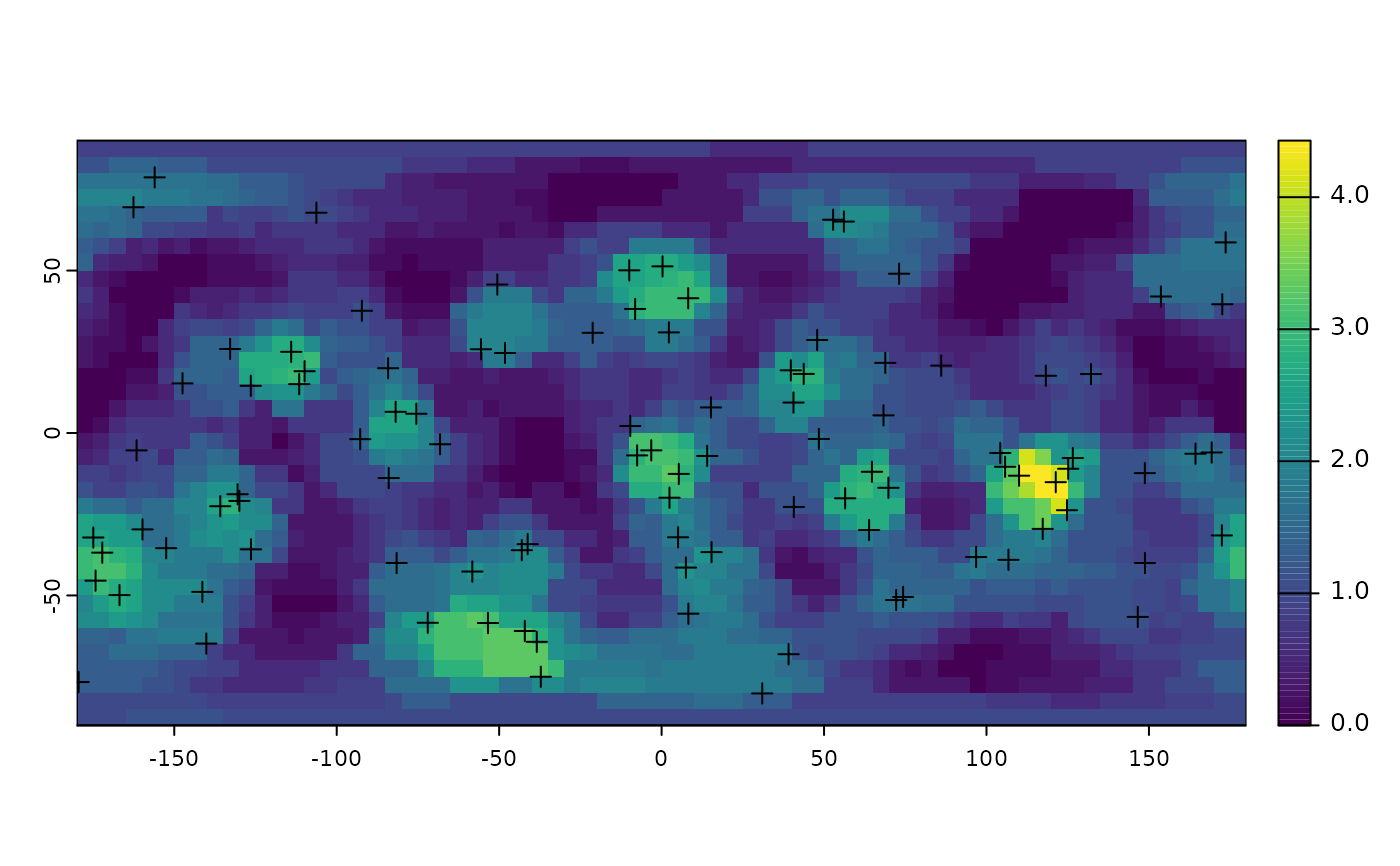Spatial density estimation algorithm based on rotation of icosahedral grids.
Arguments
- x
Matrix of longitude, latitude data,
sfclass, orSpatialPointsPoint cloud.- y
- out
trigrid,hexagridorSpatRasteroutput structure.- trials
numericvalue, the number of iterations.- FUN
functionThe function to be applied on the iteration results.
Value
Either named numeric vector, or a SpatRaster object. If FUN is set to NULL, the output will be either a matrix or SpatRaster.
Details
Any points set can be binned to an icosahedral grid (i.e. number of incidences can be counted), which will be dependent on the exact positions of grid cells. Rotating the grid in 3d space will result in a different distribution of counts. This distribution can be resampled to a standard orientation structure. The size of the icosahedral grid cells act as a bandwidth parameter.
The implemented algorithm 1) takes a point cloud (x)) and an icosahedral grid y 2) randomly rotates the icosahedral grid, 3) looks up the points falling on grid cells, 4) resamples the grid to a constant orientation object (either trigrid, hexagrid or SpatRaster). Steps 2-4 are repeated trial times, and then FUN is applied to every vector of values that have same spatial position.
Examples
# example to be run if terra is present
if(requireNamespace("terra", quietly=TRUE)){
# randomly generated points
x <- rpsphere(100, output="polar")
# bandwidth grid
y <- hexagrid(deg=13)
# output structure
out <- terra::rast(res=5)
# the function
o <- gridensity(x, y, out, trials=7)
# visualize results
terra::plot(o)
points(x, pch=3)
}
#> Selecting hexagrid with tessellation vector: c(3).
#> Mean edge length: 13.35 degrees.
#> 1
2
3
4
5
6
7

